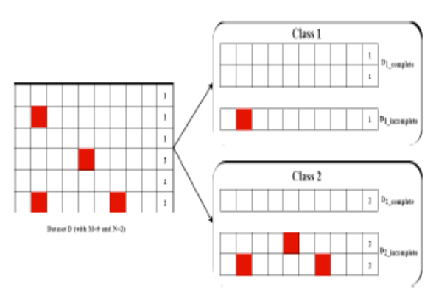


Indian Journal of Science and Technology
Year: 2023, Volume: 16, Issue: 16, Pages: 1192-1204
Original Article
P Iris Punitha1*, J G R Sathiaseelan2
1Assistant Professor, Department of Computer Applications, Bishop Heber College (Affiliated to Bharathidasan University), Tiruchirappalli-620017, Tamil Nadu, India
2Associate Professor, Department of Computer Science, Bishop Heber College (Affiliated to Bharathidasan University), Tiruchirappalli-620017, Tamil Nadu, India
*Corresponding Author
Email: [email protected]
Received Date:09 January 2023, Accepted Date:30 March 2023, Published Date:21 April 2023
Objectives: Data collection and distribution are essential components required for the victory of Internet of Medical Things (IoMT) system. Generally, missing data is the most recurrent problem that impacts an overall system performance. Methods: Missing data in IoMT systems can be caused by various factors, including faulty connections, external attacks, or sensing errors. Although missing data is ubiquitous in IoT, missing data imputation is hardly ever observed in an IoMT setting. As a result, doing analytics on IoMT data with missing values causes a deterioration in the accuracy and dependability of the data analysis outputs. To achieve excellent performance, missing data must be imputed once it occurs in such systems. Therefore, this paper proposes a novel Two Tier Missing Data Imputation (TT-MDI) technique for missing at random (MAR) type missing data in IoMT using an enhanced linear interpolation technique. Findings: The proposed TT-MDI algorithm has two tiers for imputing MAR missing data and it was tested using the Kaggle Machine Learning Repository’s cStick IoMT dataset. Utilizing the distances between the class centroids with their related data instances, the first tier aims to identify the imputation threshold. The identified threshold is then used by the second tier to impute missing data. According to the experimental findings, the proposed work offers higher accuracy, precision, recall, and F-measure for imputed dataset using the TT-MDI technique than missing data included dataset when compared to the original dataset. Novelty: The TT-MDI technique consists of two tiers. The first tier uses Manhattan distances between class centroids and related data instances to discover the imputation threshold. Next, the second tier uses the discovered threshold to impute missing data using the Enhanced Linear Interpolation technique.
Keywords: Internet of Medical Things; Imputation of Missing Data; Threshold Discovery; Manhattan Distance
© 2023 Iris Punitha & Sathiaseelan. This is an open-access article distributed under the terms of the Creative Commons Attribution License, which permits unrestricted use, distribution, and reproduction in any medium, provided the original author and source are credited. Published By Indian Society for Education and Environment (iSee)
Subscribe now for latest articles and news.